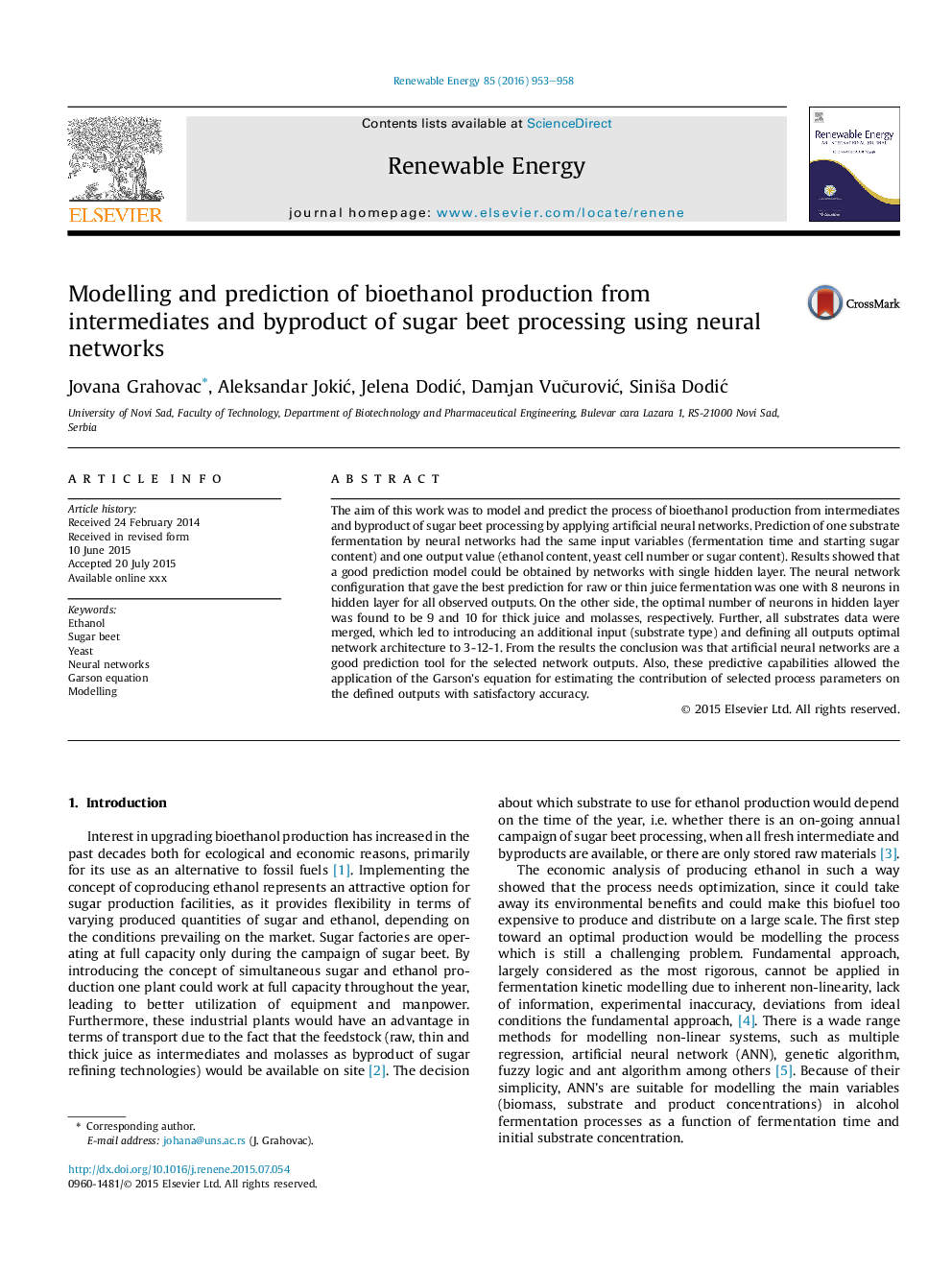| Article ID | Journal | Published Year | Pages | File Type |
|---|---|---|---|---|
| 6767018 | Renewable Energy | 2016 | 6 Pages |
Abstract
The aim of this work was to model and predict the process of bioethanol production from intermediates and byproduct of sugar beet processing by applying artificial neural networks. Prediction of one substrate fermentation by neural networks had the same input variables (fermentation time and starting sugar content) and one output value (ethanol content, yeast cell number or sugar content). Results showed that a good prediction model could be obtained by networks with single hidden layer. The neural network configuration that gave the best prediction for raw or thin juice fermentation was one with 8 neurons in hidden layer for all observed outputs. On the other side, the optimal number of neurons in hidden layer was found to be 9 and 10 for thick juice and molasses, respectively. Further, all substrates data were merged, which led to introducing an additional input (substrate type) and defining all outputs optimal network architecture to 3-12-1. From the results the conclusion was that artificial neural networks are a good prediction tool for the selected network outputs. Also, these predictive capabilities allowed the application of the Garson's equation for estimating the contribution of selected process parameters on the defined outputs with satisfactory accuracy.
Related Topics
Physical Sciences and Engineering
Energy
Renewable Energy, Sustainability and the Environment
Authors
Jovana Grahovac, Aleksandar JokiÄ, Jelena DodiÄ, Damjan VuÄuroviÄ, SiniÅ¡a DodiÄ,
